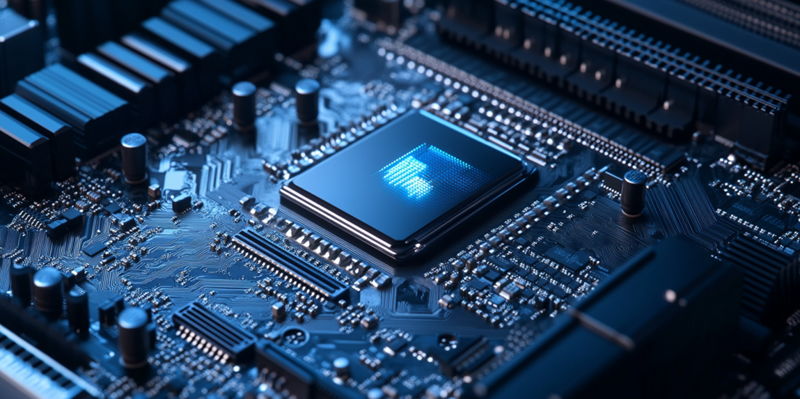Generative AI has become a cornerstone in the tech industry, pushing companies like Google and Microsoft to pour massive investments into data center GPUs. These high-performance chips are indispensable for running the vastly intricate and powerful AI models that are the current focus of technological advancements. This fervent investment, however, comes with its own set of challenges—most notably, the relatively short lifespan of these GPUs, particularly in high-utilization settings like those managed by Lambda Labs and CoreWeave. Compounding the issue is the reality that, despite astronomical investments, companies such as Google and OpenAI are operating at substantial losses.
The Growing Need for GPUs in AI Development
Heavy Investment and Its Implications
The insatiable demand for computational power to support generative AI models has directed a flood of investments towards GPUs. Nvidia, the principal supplier of these AI accelerators, stands to gain tremendously, with projections suggesting its value could triple to nearly $3 trillion by June 2024. Such optimism is fueled by the intense requirements these AI models place on hardware, necessitating GPUs that can consume up to 1,000 watts of power, especially with upcoming models like Nvidia’s Blackwell chips. However, this also presents a critical problem—the brief operational lifespan of these GPUs. Given their high energy consumption and constant usage, data center GPUs are estimated to last only about three years. This frequent need for replacement makes the infrastructure an ongoing expense rather than a one-time purchase.
Durability and Sustainability Concerns
This ceaseless cycle of investment raises significant questions about the sustainability of current spending levels. Even though AI services are expected to generate colossal revenues in the future, the present scenario paints a starkly different picture. To mitigate the financial strain, firms might consider reducing GPU utilization to prolong their hardware’s operational life. Yet, this approach could decelerate the return on investment, complicating the delicate balance between rapid AI development and fiscal responsibility. The financial dilemma thus becomes two-fold: How to keep pace with technological advancements without breaking the bank, and how to manage operational costs effectively while still pushing the envelope in AI capabilities.
Balancing AI Innovation with Financial Prudence
Investor Concerns and Financial Returns
Despite the buzz surrounding AI advancements, there’s growing unease among investors concerning the financial returns on such hefty capital expenditures. The crux of the issue lies in the current lack of substantial revenue streams directly attributable to generative AI services. Given the immense costs associated with acquiring and maintaining cutting-edge GPUs, companies are finding it tough to justify continuous investment without clear, immediate financial gains. This has led to a cautious approach among investors, who are keenly aware that while AI promises transformative benefits, the road to profitability is anything but guaranteed.
Strategies for Sustainable Growth
The technological surge fueled by AI necessitates a strategic approach to ensure sustainable growth. Firms must not only invest in the hardware required to drive AI but also devise methods to turn these ventures into revenue-generating operations. This involves exploring avenues like subscription models, premium AI services, and long-term partnerships to create robust revenue streams. Moreover, there’s a need for innovative strategies to extend the lifespan of GPUs or improve their efficiency, thereby reducing replacement costs and overall capital expenditures. By balancing these technological and financial considerations, companies can better navigate the complexities of AI investment, ensuring that the pursuit of innovation does not come at an unsustainable financial cost.
The Future Outlook of AI Investments
Nvidia’s Unique Position
Amidst this landscape, Nvidia finds itself in a unique and advantageous position. As the leading supplier of GPUs necessary for AI training and inference, Nvidia’s prospects are bright despite the broader industry’s challenges. The increasing demand for sophisticated AI models solidifies Nvidia’s market dominance and continues to drive its valuation upwards. However, Nvidia’s success also hinges on continuous improvement and innovation in GPU technology. Future advancements that offer better efficiency and longevity could alleviate some of the financial pressures faced by tech companies, fostering a more balanced and sustainable AI development ecosystem.
Industry Adaptations and Long-Term Viability
Generative AI has rapidly become a linchpin in the tech world, prompting giants like Google and Microsoft to invest heavily in data center GPUs. These high-performance graphics processing units are crucial for executing the highly complex AI models that stand at the forefront of today’s technological progress. This surge in investment, however, comes with its own set of hurdles. Chief among these is the relatively brief lifespan of GPUs, especially in high-demand environments like those operated by Lambda Labs and CoreWeave. The situation is further complicated by the fact that even with staggering financial commitments, companies such as Google and OpenAI find themselves operating at significant losses. This scenario underscores the extraordinary financial and logistical demands involved in advancing generative AI technologies. As these companies navigate this challenging landscape, the pressure to innovate faster and more efficiently is greater than ever, with the stakes reaching unprecedented heights in the competitive tech industry.

